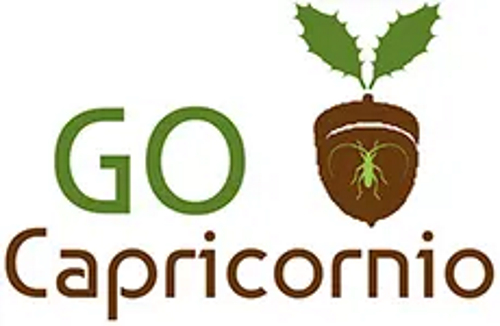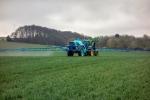
CAPRICORN Operational Group: Study on methods for controlling the population of Cerambyx cerdo (Coleoptera: Cerambycidae) in the holm oak forests of the Pedroches Valley
- Type Operational group
- Status In progress
- Execution 2023 -2025
- Assigned Budget 258.704,00 €
- Scope Autonómico
- Autonomous community Andalucía
- Project website GO CAPRICORNIO
The primary sector has evolved from a trade to a comprehensive activity that requires a harmonious balance of economic, environmental, and social sustainability. The sustainability of agrosystems requires the use of technological solutions that enable and facilitate the management of various activities, such as natural resource management, pest and disease detection, damage assessment, risk management, and so on. Currently, Spanish holm oak forests, and more specifically those in Andalusia (particularly Sierra Morena) and the Balearic Islands, are being heavily attacked by wood-eating insects of the Cerambyx Group, a coleopteran insect protected by the Habitats Directive (and the Bern Convention), which weakens and feeds on the wood of holm oaks.
At this time, the only way to control this insect is through systematic population control, felling diseased trees and eliminating larvae so they don't reach adulthood and lay more eggs, systematically reducing the number of specimens, which is currently very high. As a result of the rapid loss of trees, this innovative project proposes integrating artificial intelligence (AI) and image processing systems for the early detection of specimens affected by Cerambyx, along with a treatment system that combines an ultrasound-based methodology with endotherapy techniques. This project also addresses the economic and social importance of the dehesa given its surface area, which contributes to establishing the rural population, reducing migratory flows, and creating an agri-food and livestock industrial network.
Preventing and improving the health of holm oak forests will have a significant economic impact, as it will help produce a greater number of Iberian pigs finished during montanera, with the resulting social impact. It will also impact the agroforestry sector, contributing to the development of low-environmental-impact control methods (sustainability) and technologically advanced solutions (digitalization), as well as to sensor companies, whether local, regional, and/or national, given that the project proposes the use of new digital tools to better monitor the health of trees, enabling more efficient management of the state of Cerambyx disease in holm oak forests, detecting development problems, rot, and loss of vigor, as well as facilitating preventative measures.
The project consists of eight main activities, in addition to coordination and results dissemination activities.
Technical activities include the analysis of the incidence of wood-eating insects on Quercus trees, the development of an artificial intelligence-based methodology to parameterize and characterize the trees, as well as establishing the Cerambyx infestation coefficient, the development of IoT sensor systems to detect Cerambyx activity, the development of ultrasound technology for pest control, the screening of low-risk fungistatic substances to control decay by trunk injection, the screening of fertilizer/biostimulant active ingredients, their chemical adaptation to liquids suitable for endotherapy, as well as adaptability and efficacy tests.
The overall objective of the project is to develop a comprehensive strategy to reduce the density of wood-eating insect populations affecting the dehesa, based on IoT, AI, and physical control systems integrated with ultrasonic sensor systems.
This general objective is broken down into the following specific objectives:
- To analyze the impacts produced by insects of the Cerambyx Group in holm oak and cork oak forests in the Comarca de los Pedroches.
- Develop a temporal and spatial assessment model and a risk model for the incidence of insects from the Cerambyx Group in the Los Pedroches Region.
- Apply artificial intelligence and IoT devices to locate trees susceptible to attack by Cerambyx insects, as well as to determine the severity of tree damage.
- Develop systems for controlling damage from wood-eating insects based on tree biostimulation by combining endotherapy and ultrasonic sensing techniques.
- Evaluate the results obtained and transfer them to the agricultural sector and the scientific community.
- Coordinator/entity name: Agri-Food Research and Quality Center of the Pedroches Valley (CICAP)
- Postal address: Dehesa Boyal Industrial Estate, 8, Plots 9-13. 14400, Pozoblanco, Córdoba
- Coordinator/entity email: bplazuelo@cicap.es
- Telephone: 957116254
- Centro de Investigación y Calidad Agroalimentaria del Valle de los Pedroches (CICAP)
- Centro de Investigación y Calidad Agroalimentaria del Valle de los Pedroches (CICAP) (bplazuelo@cicap.es)
- El Trebolar S.C.P. (franescribano@eltrebolar.com)
- Universidad de Córdoba (direccion.otri@uco.es)
- Fertinyect, S.L. (admon@fertinyect.com)
- ADSG PEDROCHES I
- Centro de Investigación y Calidad Agroalimentaria del Valle de los Pedroches (CICAP)






